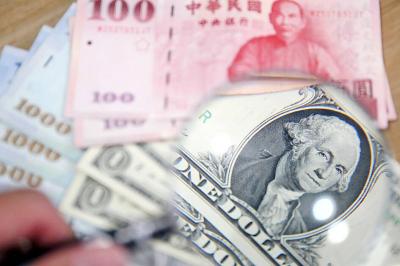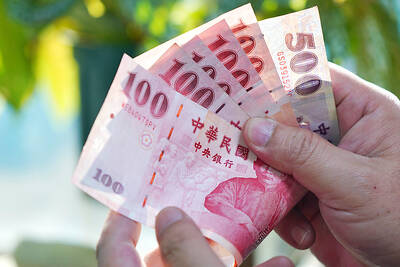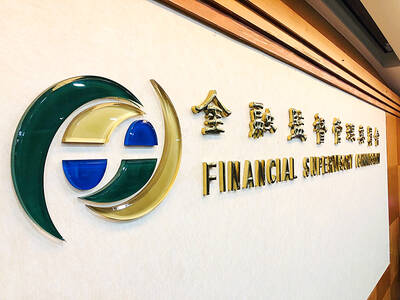Largan Precision Co (大立光) and Catcher Technology Co (可成) on Saturday reported rising revenue for last month from March, after most companies in the handset components sector reported weak first-quarter results amid the sluggish global smartphone market.
As leading suppliers in the global handset supply chain, the two companies’ revenue streams are closely monitored by market watchers to determine whether the smartphone market will follow expectations and show a recovery this quarter, or deteriorate faster than expected.
Handset camera lens maker Largan reported better-than-expected revenue for last month on the back of a continued improvement in yield rates and favorable product trends.
The Taichung-based company saw consolidated revenue reach NT$3.47 billion (US$116.8 million) last month, up 10.34 percent from the previous month.
Last month’s sales were still 6.02 percent lower than a year earlier, according to figures that Largan posted on its Web site on Saturday.
In the first four months of this year, consolidated revenue totaled NT$12.34 billion, down 14.84 percent from NT$14.5 billion during the same period last year.
The bright spot is that higher-priced lenses for cameras of 10 or more megapixels still made up a larger portion of shipments, accounting for 70 to 80 percent of the company’s overall shipments last month, while 8-megapixel products accounted for 10 to 20 percent and the 5-megapixel line contributed up to 10 percent, the company said.
Largan — whose customers include Apple Inc and several Android smartphone vendors — last month said it was upbeat about sales for this month and next month, compared with NT$3.14 billion in March, given the company’s efforts to improve production yield rates.
With potential strong demand for OLED iPhones in the second half of the year and the emerging adoption of triple-camera lenses by some handset vendors, as well as resilient prices and gross margin of the company’s products, Largan could see a year-on-year recovery in sales and operating profit from this month, Yuanta Securities Investment Consulting Co (元大投顧) analyst Jeff Pu (蒲得宇) said in a note on Wednesday last week.
Pu said Huawei Technologies Co (華為) is expected to drive triple-camera lens adoption by introducing a lower-spec device for the Mate 20 model, while Apple is likely to launch a new iPhone model with a triple-lens rear camera in the second half of next year.
Assuming that other vendors would follow suit and therefore boost adoption of the triple-lens design, it could “provide a much-needed improvement in Largan’s capacity utilization rate,” Pu said.
Meanwhile, casing maker Catcher posted revenue of NT$6.6 billion for last month, a surge of 1.3 percent from the previous month and up 28.54 percent from the same period a year earlier.
Cumulative revenue in the first four months totaled NT$27.01 billion, a 36.99 percent annual increase from NT$19.72 billion, the Tainan-based company said.
Catcher also released its audited first-quarter results, which showed that net profit increased 75 percent year-on-year to NT$3.66 billion, the company’s highest level for the same period, with earnings per share of NT$4.75.
However, gross margin declined to 41.75 percent and operating margin to 32.6 percent, both the lowest levels since the second quarter of 2016, company data showed.
Earnings per share in the first quarter came lower than KGI Securities Investment Advisory Co’s (凱基投顧) estimate of NT$5.27 and a market consensus forecast of NT$6.7.
Analysts said ahead of the data release that Catcher’s sales would be particularly strong in the second half of this year, closely aligned with customers’ scheduled launches of new products.
“The company’s sales in the first quarter were affected by weak iPhone demand and sales in the second quarter could be affected by the delayed launch of a new MacBook Air model,” KGI researchers led by Angela Hsiang (向子慧) said in a note on Monday last week.
KGI predicted that sales in the second half would be 65 percent higher than in the first half, and that profit in the second half would grow 124 percent from the previous half.
Overall, Catcher is likely to maintain its lead over metal casing peers in terms of profitability this year, thanks to its highly automated production lines and in-house development of cutters, tooling, fixture and feeder parts, which would allow the company to enjoy lower manufacturing costs, while having the capability to rapidly increase short-term production with a high yield and efficiency rate, KGI said.

The US dollar was trading at NT$29.7 at 10am today on the Taipei Foreign Exchange, as the New Taiwan dollar gained NT$1.364 from the previous close last week. The NT dollar continued to rise today, after surging 3.07 percent on Friday. After opening at NT$30.91, the NT dollar gained more than NT$1 in just 15 minutes, briefly passing the NT$30 mark. Before the US Department of the Treasury's semi-annual currency report came out, expectations that the NT dollar would keep rising were already building. The NT dollar on Friday closed at NT$31.064, up by NT$0.953 — a 3.07 percent single-day gain. Today,

‘SHORT TERM’: The local currency would likely remain strong in the near term, driven by anticipated US trade pressure, capital inflows and expectations of a US Fed rate cut The US dollar is expected to fall below NT$30 in the near term, as traders anticipate increased pressure from Washington for Taiwan to allow the New Taiwan dollar to appreciate, Cathay United Bank (國泰世華銀行) chief economist Lin Chi-chao (林啟超) said. Following a sharp drop in the greenback against the NT dollar on Friday, Lin told the Central News Agency that the local currency is likely to remain strong in the short term, driven in part by market psychology surrounding anticipated US policy pressure. On Friday, the US dollar fell NT$0.953, or 3.07 percent, closing at NT$31.064 — its lowest level since Jan.

The New Taiwan dollar and Taiwanese stocks surged on signs that trade tensions between the world’s top two economies might start easing and as US tech earnings boosted the outlook of the nation’s semiconductor exports. The NT dollar strengthened as much as 3.8 percent versus the US dollar to 30.815, the biggest intraday gain since January 2011, closing at NT$31.064. The benchmark TAIEX jumped 2.73 percent to outperform the region’s equity gauges. Outlook for global trade improved after China said it is assessing possible trade talks with the US, providing a boost for the nation’s currency and shares. As the NT dollar

The Financial Supervisory Commission (FSC) yesterday met with some of the nation’s largest insurance companies as a skyrocketing New Taiwan dollar piles pressure on their hundreds of billions of dollars in US bond investments. The commission has asked some life insurance firms, among the biggest Asian holders of US debt, to discuss how the rapidly strengthening NT dollar has impacted their operations, people familiar with the matter said. The meeting took place as the NT dollar jumped as much as 5 percent yesterday, its biggest intraday gain in more than three decades. The local currency surged as exporters rushed to